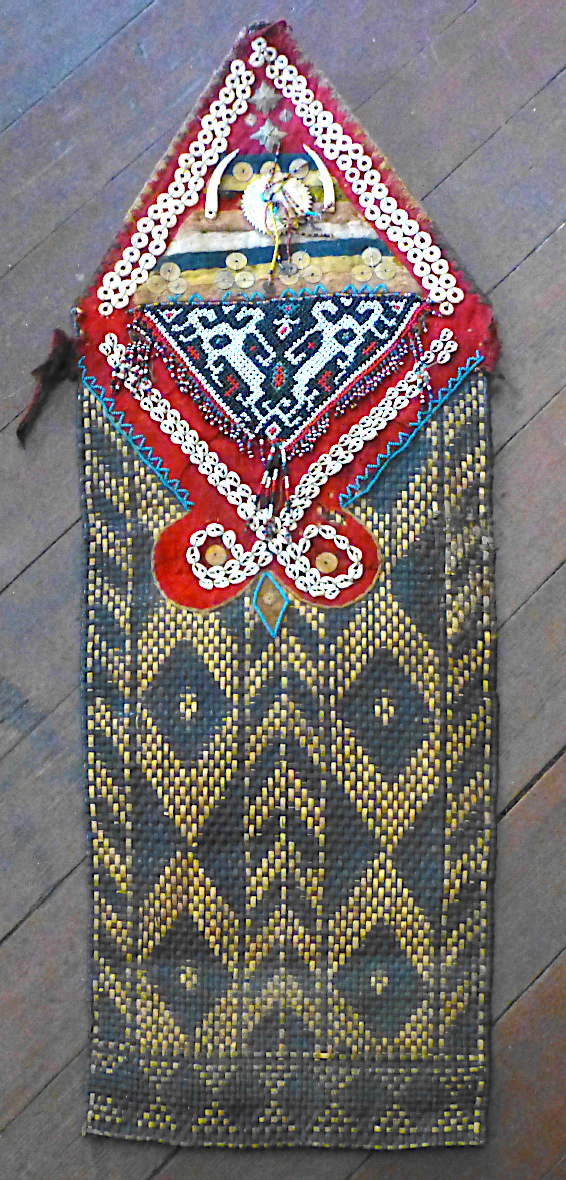Tikai Burit (Seat Map)
In addition to being accomplished weavers like many of the indigenous groups living in Borneo, the people commonly known as the Maloh are also expert bead workers. Mats such as this one are popular objects, and can be both utilitarian and highly decorative. They are tied around the waist by men while working or travelling, and used to sit on to protect the loincloth. This mat is crafted with beading, shell buttons, sequins, appliquéd fabrics and a pair of small fangsa showcase for several separate crafts. As such, it was probably meant to be displayed primarily as an object of beauty rather than as an extra layer between the wearer and the ground.
Many Dayak groups use the tikai burit, which can also be made of bark, bark cloth, woven cotton, simple woven rattan, leather, or hide. Tikai burit of this complexity, however, are considered to be the more exclusive product of a people often called Maloh by both other ethnic groups of Borneo and more particularly by anthropologists, though as is often the case with ethnographic designations ascribed by others the term can mean a number of things, from a generic name for flatland-dwelling Dayak to a specific one for people living along the banks of a handful of rivers in western Borneo. This is a common issue when ascribing provenance to ethnic minorities in the area, as the terms used by groups for themselves are often different from those used by outsiders, and it is impossible to tell what degree of specificity is intended without inquiry. As technologies and techniques are readily portable, it is also difficult to identify a people with great certainty based on the objects they produce. While these are important points to bear in mind when assessing objects, it by no means limits the enjoyment to be found in contemplating skillfully made objects such as this one.
Rattan, cotton cloth, felt, shell, glass beads, thread, sequins, teeth; 58.5 x 22cm
Nelson South East Asia Collection © 2025
